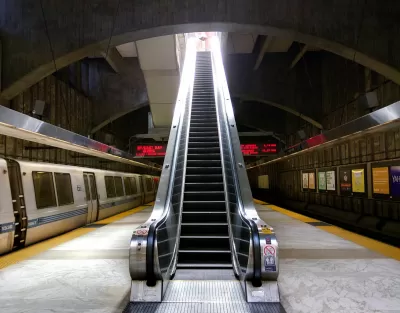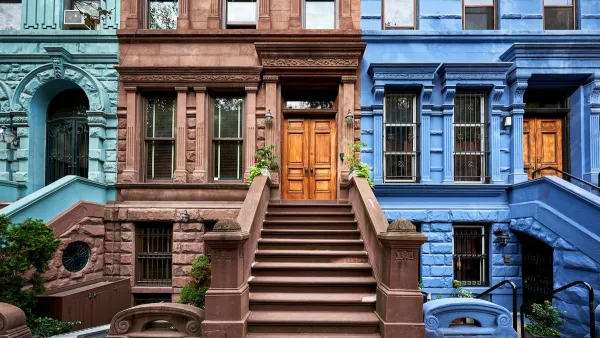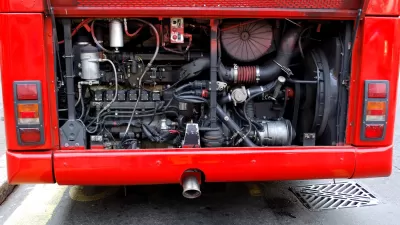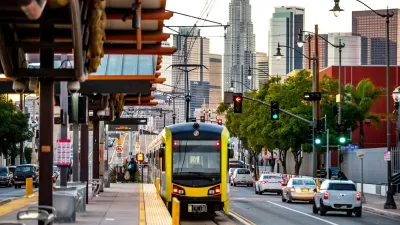We have a limited number of dense core neighborhoods in which getting around without a car is possible; such neighborhoods may appeal to many people, but having access to them affects people differently depending on work type and income level.

In a Twitter thread responding to Rick Jacobus’s December 2018 article “YIMBYs, Thanks for Listening,” the conversation turned from housing supply and affordability to commuting and transit. BART, the Bay Area’s regional transit system, is seriously overloaded, commenters complained, and moving even a little ways out of the city can lead to hours-long, unreliable commutes.
In “YIMBYs, White Privilege, and the Soul of Our City,” Fernando Martí discusses the sense that one of the things that gets people riled up about the YIMBY movement is that while proponents talk about the importance of breaking into exclusionary surrounding communities, few of them actually want to live in those places, preferring instead to live in now-hip core neighborhoods.
Martí sees this as stemming from a sense of entitlement, and that’s definitely present. But I think there’s something more there. Having grown up in the age of fighting sprawl, climate change, and impoverished cities that “needed help,” I think Millennials, and even Gen Xers like myself, tend to have absorbed the idea that living in a walkable, bikeable, transit-rich area is itself an ethical choice—the smart growth choice. Those who opt for urban living therefore consider themselves to be voting with their feet for the kind of dense neighborhoods we need to build, and reducing their carbon footprint. Many of them still have families who worry about them in the big bad (racially diverse) city, against which they are holding up a different ideal of how we can and should live.
“The planet is burning down and electric cars will not save us,” says Victoria Fierce, of East Bay for Everyone.
“We’ve had a land use policy in the United States that resulted in extensive segregation of our communities [by] race and by income,” says Jesse Kanson-Benanav, a leader of the YIMBY group A Better Cambridge in Cambridge, Massachusetts. “Part and parcel to that segregation and social division was the impact on the environment, sprawling development that requires people to be in cars and eats up farmland [and] natural landscape. So I really wanted to be involved in discussions about how [to] re-urbanize America, building higher density communities as a way to address the social segregation and environmental destruction of 100 years of suburban sprawl.”
I expect this is partly why many folks who have chosen core neighborhoods are then so affronted to be called “gentrifiers” and told their presence in those places might be causing harm. They thought they were making the ethical choice, not just the culturally appealing one.
FULL STORY: Who Most Needs Access to Core Neighborhoods?

Maui's Vacation Rental Debate Turns Ugly
Verbal attacks, misinformation campaigns and fistfights plague a high-stakes debate to convert thousands of vacation rentals into long-term housing.

Planetizen Federal Action Tracker
A weekly monitor of how Trump’s orders and actions are impacting planners and planning in America.

In Urban Planning, AI Prompting Could be the New Design Thinking
Creativity has long been key to great urban design. What if we see AI as our new creative partner?

King County Supportive Housing Program Offers Hope for Unhoused Residents
The county is taking a ‘Housing First’ approach that prioritizes getting people into housing, then offering wraparound supportive services.

Researchers Use AI to Get Clearer Picture of US Housing
Analysts are using artificial intelligence to supercharge their research by allowing them to comb through data faster. Though these AI tools can be error prone, they save time and housing researchers are optimistic about the future.

Making Shared Micromobility More Inclusive
Cities and shared mobility system operators can do more to include people with disabilities in planning and operations, per a new report.
Urban Design for Planners 1: Software Tools
This six-course series explores essential urban design concepts using open source software and equips planners with the tools they need to participate fully in the urban design process.
Planning for Universal Design
Learn the tools for implementing Universal Design in planning regulations.
planning NEXT
Appalachian Highlands Housing Partners
Mpact (founded as Rail~Volution)
City of Camden Redevelopment Agency
City of Astoria
City of Portland
City of Laramie





























